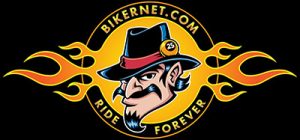Sponsored By


You need to be careful to tighten the bolts on the front end in a particular order. If you don’t, you can end up causingleaks in the tubes from bending them improperly. The axel has a shoulder on the right (pipe side) of the bike. Loosenthe fork ends place the axel in from the right, and tighten the axel nut first. Then, tighten down the fork ends.If you slip it into place, tighten the fork ends first, then the axel nut, you can fuck things up.
This wheel setup is a dual disc front end. It required a special hub that was setup for dual discs. Although it lookscool as hell, this was my first experience with dual discs, and it was a pain. I wouldn’t do it again for a couple of reasons.First off – it adds extra weight, and you really only need 2 pistons to lock up the front wheel. I have 8…. Sure,it’ll be more responsive, but it’s costly, and it covers up those nice lookin’ wheels. The good part it, the front endlooks absolutely massive with all that hardware hangin’ off of it. Just a personal preference.Special spacers from Custom Cycle Engineering had to be procured to get the rotor into the right position. A word to thewise – call the shop before ordering any spacers. Buying these out of a catalog for building a custom is damned nearimpossible. The catalogs talk about ‘From Mid Glide To Wide Glide’ type of specs…. Bullshit. You need to know howthick the damned thing really is before you buy it.
Another trick I about front mounting wheels… Don’t think you can align the wheel to center by measuring off the bearingsand spacers before you mount the wheel. Some hubs aren’t right on the money. I found mine were about 1/4″ off whenI mounted the wheel, only to find centerline of the wheel was to far to the left. Get your wheel mounted, then measureit off using hardware spacers (washers). Then order your spacers afterward. It’ll save you some serious time.

On to Part 8 Page 4….
Back to Part 8 Page 2….
Back to Custom Chrome on Bikernet….

